Writing this Suicide Squad: Kill the Justice League review isn’t easy. All things considered; this game should’ve been a massive homerun for me. The Batman Arkham games are some of my favorites of all time, City and Origins in particular, live service games are some of my most played in recent years, and I’m just an overall fan of anything superhero related. There is a lot of good to be found here and in all honesty, I did have a lot of fun in some areas. However, Suicide Squad: Kill the Justice Leage is in conflict with itself as to what type of game it wants to be. For every excellent aspect we all know Rocksteady is capable of, there’s a generic gameplay element meant to cater to the game as a service aspect that feels severely out of place.
As if Marvel’s Avengers wasn’t proof enough that this concept doesn’t work, in comes DC with the Suicide Squad. A damn shame given how there are moments in this game where it felt like Rocksteady was really trying to make a solid singleplayer experience. It’s unfortunate that the multiplayer elements drag it all down in order to make way for battlepasses, seasonal drip content drops, and a monetization system that’s driven to squeeze as much money from the players as possible.
Killer first impressions
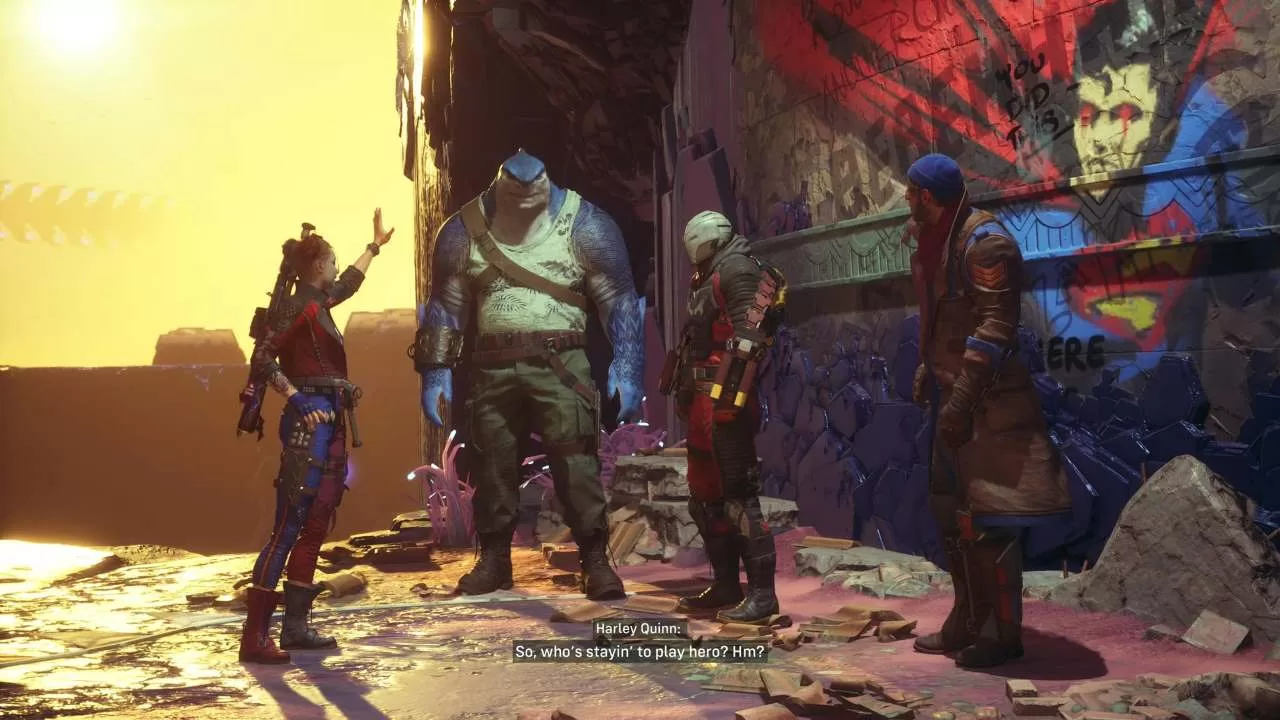
Much to the shock of no one, Suicide Squad: Kill the Justice League is about the Suicide Squad trying to kill the Justice Leage. Pretty straightforward but interesting concept. Braniac has fully taken over Metropolis and has taken over the minds of the world’s greatest heroes. Amanda Waller, played flawlessly by Debra Wilson, is now forced to work with the world’s worst villains to try and fight back.
The opening hours of the game are actually pretty good. I’d go as far as to say that it’s the best part of the whole thing. The main cast of characters are all played excellently by their respective actors. Deadshot is a grumpy badass. King Shark is basically DC’s version of the MCU’s Drax. Harley Quinn is still eccentric and whack out of her mind. And much like in David Ayer’s version, Captain Boomerang steals the show with the absurdity that you love to hate. Each member of the Suicide Squad has their own recognizable personality that both clashes and gels well with each other. It makes for great comedy when everything hits right but it can also lead to some cringey moments at times. Even the Justice Leage themselves get the early game spotlight with top notch introductions and even an explorable Hall of Justice that provides some insight into their operations and relationships with one another.
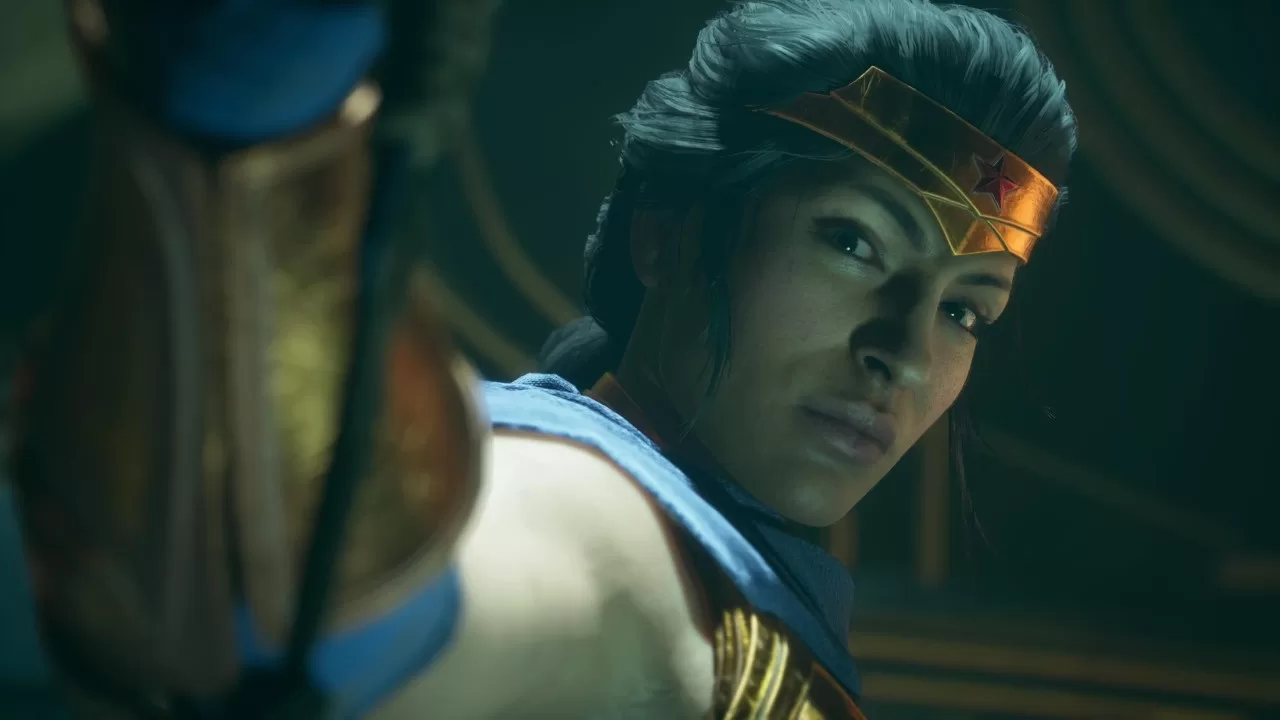
A lot of the early game’s success is also thanks to the fantastic presentation the game has. While it is nowhere near Arkham Knights’ graphical fidelity, that game remains to be an anomaly that places games released as far as today to shame, Suicide Squad’s visuals are still top tier. Metropolis is beautifully realized with popping colors and distinct structures. There are details to be found on the wreckage of war on the streets to the skies overshadowed by Braniac’s massive skull ship. But special praise has to go to the attention given to the character designs. The Suicide Squad has never looked this good with fantastic models and some of the best facial animations in the industry. Simply put, the game is a graphical treat.
The initial story setup is great. There’s a lot of ideas introduced that was immediately interesting for me to see where it all goes. Unfortunately, the rest of the game is an underbaked mess that ultimately ends prematurely to make way for the live-service aspects. Characters are either underdeveloped or underutilized. This includes the Suicide Squad, the Justice Leage, and even the other recognizable DC personalities you meet along the way. Given the pedigree Rocksteady has as storytellers with the Batman IP, it makes this one feel extra painful to see.
What are we? Some kind of live-service game?
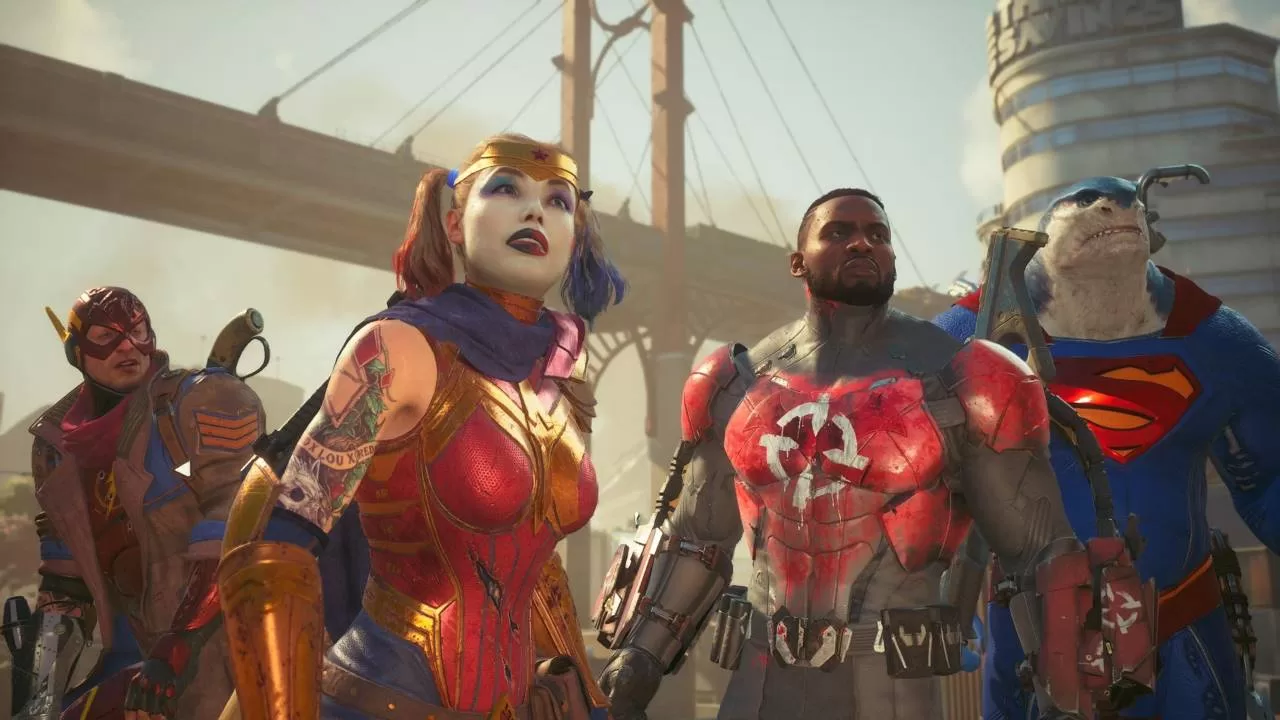
As much as I love a looter shooter, having played ungodly hours of Borderlands, Destiny 2, The Division 2, and Warframe, Suicide Squad further emphasizes the point that Marvel’s Avengers had already made: having a popular IP doesn’t always mean that the formula works well with it.
Once initial introductions are made, you are then introduced to a set of missions that are immediately obvious that they will be the main infrastructure of the live-service aspect of the game. Mission variety is nonexistent whatsoever and it is with this repetition and shallow gameplay loop where the narrative experience ultimately suffers.
A live-service game lives and dies by the diversity of its experiences. Suicide Squad contains some of the worst campaign mission design for the genre. It’s all just centered around open-world public events. Repetitive mission types that rotate through protecting a certain key object, eliminating waves of enemies, transporting this from one place to the other, and clearing an area. It’s all rinse and repeat. It doesn’t help that there’s only 1 enemy faction to fight against. There are minor differences with the enemy types but they’re just the usual grunts, armored grunts, and bigger grunts that we all know too well at this point.
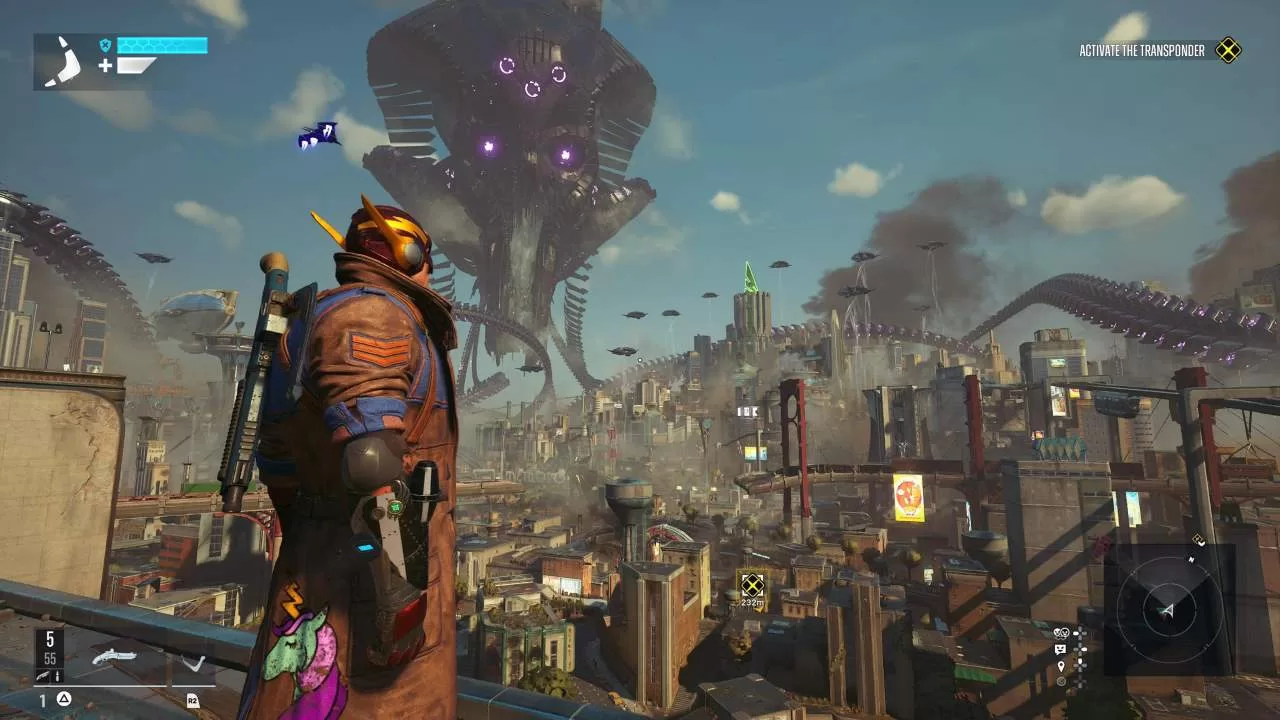
There is little to no opportunity for gameplay variety. The playstyle I had at the start is the exact same I had with the endgame. You fly/ jump around, shoot enemies, activate an ultimate move every now and then. There’s no thought, strategy, or challenge being offered. The worst offender has to be in the boss fights with the Justice League themselves. Remember memorable encounters with Mr. Freeze, Clayface, and Deathstroke in the Arkham games? Not a single boss fight in Suicide Squad comes close to any of those from a mechanical and thematic sense. What do you do to take down the Justice League? Shoot them with bullets till the health bar goes down. That’s it. Disappointing and unsatisfying.
The combat itself is highly enjoyable, when viewed in isolation. The game rewards you if you chain together unique traversal moves per character with the shots you take. I’m always going to be a sucker for games that have big numbers pop up indicating damage inflicted on enemies. But, as soon as I took a few steps back and realized that I’m supposed to be playing a Suicide Game and not a generic movement-based shooter, it all came crashing down once again. None of the character kits are centered around gunplay rather than the characters themselves. Why is King Shark relying on a minigun? Why is Captain Boomerang using a sniper and a shotgun? These are all characters that have their own unique quirks and abilities that can be interesting to see how it’ll be translated in a gameplay setting but instead, Rocksteady just chooses to give them all guns to fire away. This completely eliminates any sense of personality. I’m more focused on finding Harley a pistol with higher stat numbers rather than seeing how I can take advantage of her acrobatic nature to help me in battle.
For a game centered around firearms, aside from the damage numbers, there’s nothing to distinguish them from one another. They all have the same easy-to-control recoil patterns, highly generous auto-aiming, and minimal pros and cons for each “type”. A massive oversight that contributes to how quickly the gameplay turns stale after a couple of hours.
Suicide Squad: Endgame
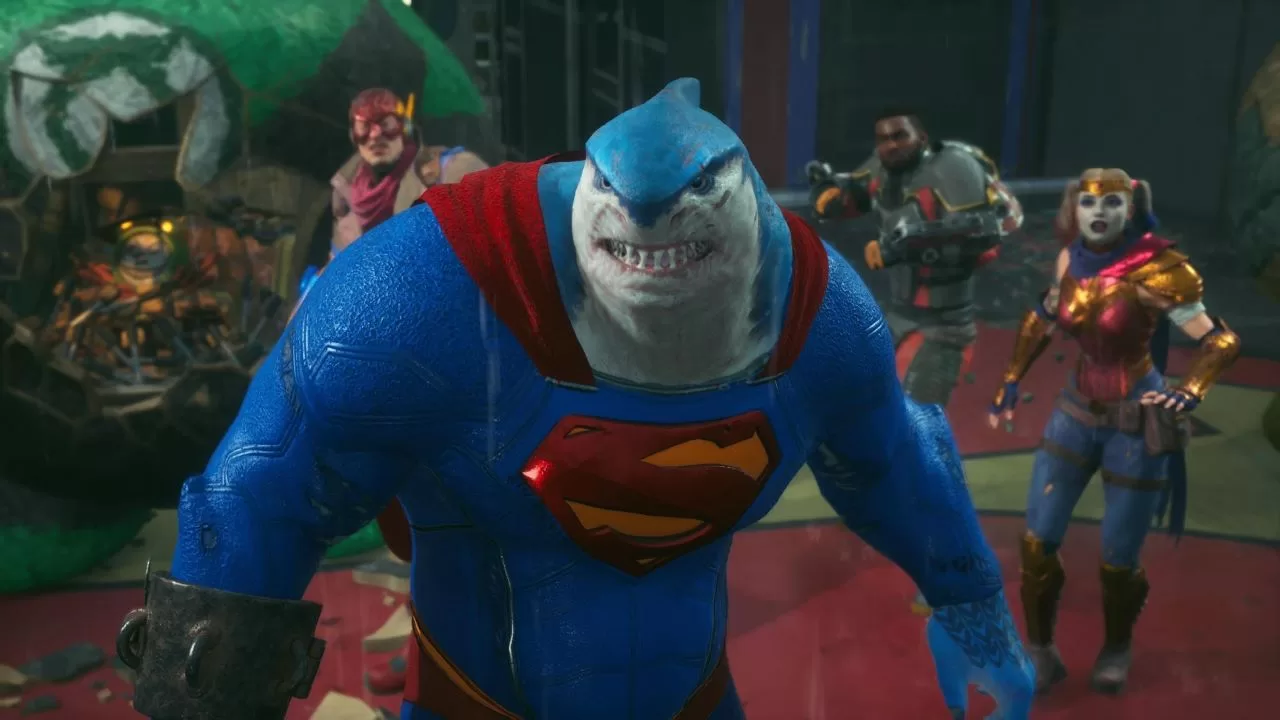
The endgame of Suicide Squad is very simple. You do a bunch of open-world activities to earn enough to travel to incursions, these are multiverse versions of Metropolis. In here, you can do the same set of open-world missions, only this time, they are slightly harder because certain gameplay modifiers can be turned on such as exploding enemies or only your grenades can do damage. There’s also a horde mode that’s pretty self-explanatory. There’s also a challenge system where you have to accomplish specific moves until a special enemy type spawns in.
The more you grind the incursions the more chances you’ll get notorious items, the cream of the crop when it comes to the loot of the game. That’s really it. Play the same set of missions you have been doing in the main campaign, only make them slightly harder with the same tile sets and enemy types. That’s your endgame content. I know that future updates will come that will hopefully bring in more variety, but the fact that this game launched at full price with barely bare minimum content is unacceptable. This is already considering that it was delayed for a year. 9 years since their last release, Rocksteady has managed to put out a product that feels more like a beta test rather than a fully developed title that’s meant to be played endlessly.
There’s also the in-game store that sells characters skins for real-life money. What could’ve been a great endgame incentive to go for iconic looks for the Suicide Squad, it just becomes a generic cash grab.
Suicide Squad: Kill the Justice League Review Final Verdict – 6.5/10
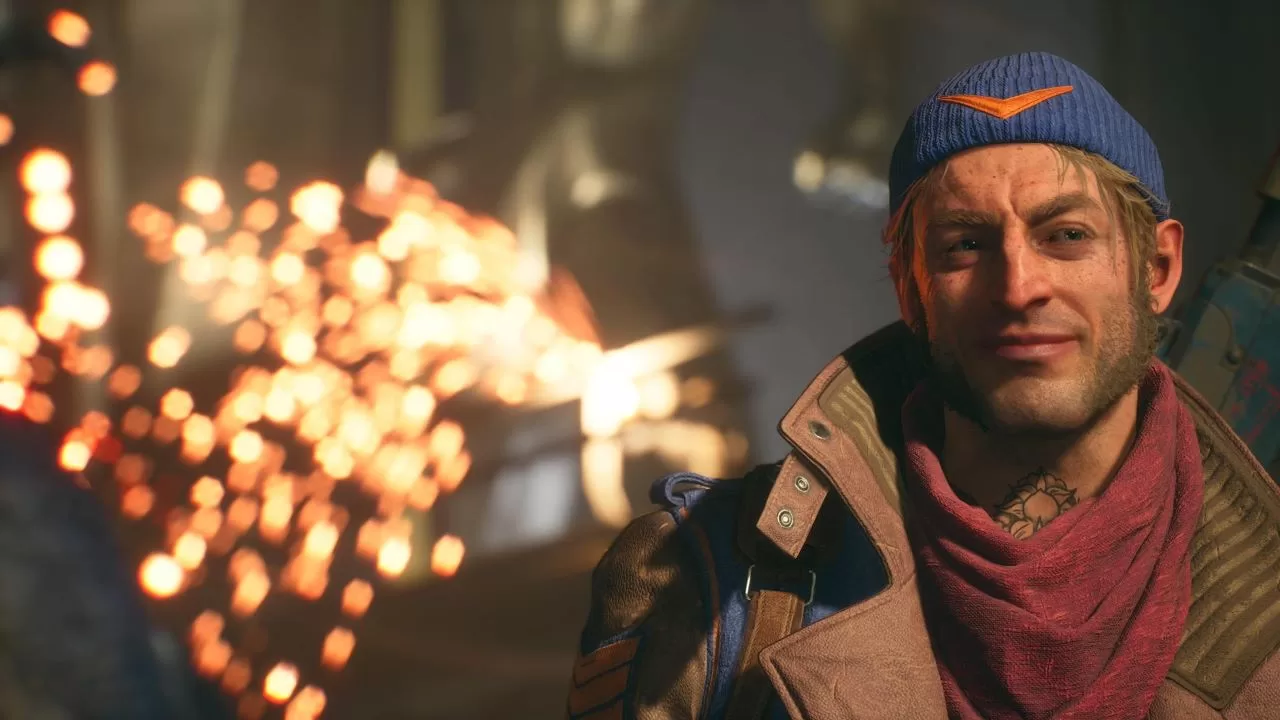
It is heartbreaking to see where Rocksteady is at right now. I could tell that deep down, those folks wanted to make a true singleplayer Suicide Squad game. Instead, they were forced to create Gears of Warframe that just so happens to be set in the DC universe.
A lot of the core issues of the game could’ve been fixed with just a couple of tweaks. Add more mission variety, make the Suicide Squad members play like themselves rather than expendable soldiers, and set the narrative in a universe separate from the already decently concluded Arkhamverse. While I loved seeing Kevin Conroy back as Batman, the Justice League presented with the Rocksteady touch, and the Suicide Squad having the time of their lives, it’s the live-service aspects that reel me back into reality that this is just another generic looter shooter that launched at a barebones state.
This review was made using a game code for the PS5 provided by the publisher.


